
Alessandra Ferrini
I am a visual artist, researcher, and educator working between the UK and Italy. I hold a PhD from the London College of Communication, University of the Arts London, with a thesis titled "Gaddafi in Rome: Dissecting a Neocolonial Spectacle. Crafting a genealogical strategy for an accountability-based framework”. The practical outputs from this research have been awarded the most prestigious contemporary art prize in Italy, the Maxxi Bvlgari Prize 2022, and have been exhibited at the 60th Venice Biennale in the international exhibition "Foreigners Everywhere" curated by Adriano Pedrosa (2024).
Overall, my research is concerned with Italian colonial and Fascist history, memory, and heritage. Informed by critical whiteness studies, I investigate the Italian archive of coloniality, its foreign and racial politics, focusing on practices of resistance to systemic violence and on notions of historical responsibility. My research-driven practice is rooted in lens-based media, (post)colonial and memory studies, historiographic and archival practices. It spans from moving images and installation to performance-lecture and sound-based public art, as well as collaborative, editorial and pedagogic projects.
Between 2013 and 2017 I was one of the two Founders and Directors of Mnemoscape, a research platform and online magazine focused on contemporary art projects concerned with history, memory and the archival impulse.
Overall, my research is concerned with Italian colonial and Fascist history, memory, and heritage. Informed by critical whiteness studies, I investigate the Italian archive of coloniality, its foreign and racial politics, focusing on practices of resistance to systemic violence and on notions of historical responsibility. My research-driven practice is rooted in lens-based media, (post)colonial and memory studies, historiographic and archival practices. It spans from moving images and installation to performance-lecture and sound-based public art, as well as collaborative, editorial and pedagogic projects.
Between 2013 and 2017 I was one of the two Founders and Directors of Mnemoscape, a research platform and online magazine focused on contemporary art projects concerned with history, memory and the archival impulse.
less
Related Authors
Galen Strawson
The University of Texas at Austin
Perdita Phillips
Independent Researcher
Bob Jessop
Lancaster University
Alejandra B Osorio
Wellesley College
Andrea Peto
Central European University
Benjamin Noys
University of Chichester
Beatrice Jauregui
University of Toronto
Simon O'Sullivan
Goldsmiths, University of London
paula roush
London South Bank University
David Seamon
Kansas State University
InterestsView All (36)
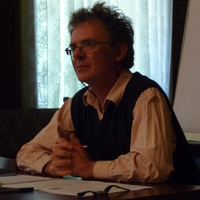

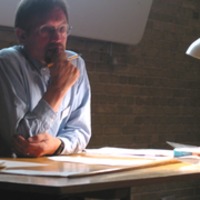

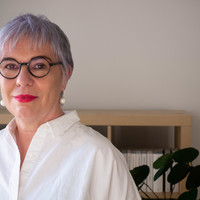
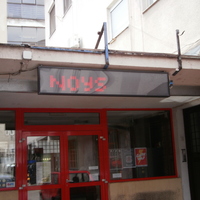


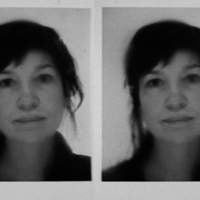

Uploads
Papers by Alessandra Ferrini
http://mnemoscape.wordpress.com/magazine/ "
Drawing on Walter Benjamin's suggestion 'to carry over the principle of montage into history'1 I will argue that contemporary artists' moving images can provide new ways of dealing with the past that take into account postmodern criticism of Historiography. Moving images have the potential of 'looking at' the past, eschewing tendencies veering towards emplotment and linear, finite narratives entailed in the medium of writing. To support my argument, I will analyse Zarina Bhimji’s Yellow Patch and Uriel Orlow’s Holy Precursor (both moving image works from 2011). Holy Precursor documents a house that was built out of the ruins of an Armenian monastery, while Yellow Patch focuses on the collapse of India's colonial past as reflected in decaying architecture, bureaucratic spaces as well as deserted landscapes and seascapes populated by abandoned ships. Reading space as 'latent archives'2 – an archive embedded in space - these works bring to light the way the past is manifested in the present.
1. Walter Benjamin, The Arcades Project (Cambridge, Mass. and London: Harvard University Press 2002), p.461
2. Uriel Orlow, Latent Archives, Roving Lens [online]
Available from: <http://www.slashseconds.org/issues/002/004/articles/uorlow3/index.php>
although in many ways, because of the focus on the material object, the words have become
invisible'. (Eilean Hooper-Greenhill, 1994, p.115)
Death: A Self-Portrait, is a temporary exhibiton that is taking place at the Wellcome Collecton in London.
Opened on the 15th of November 2012, it is displayed at this venue untl the 24th of February 2013. The
exhibiton presents a selecton of artefacts and memorabilia related to the theme of 'death', which have
been brought together by one collector, Richard Harris. The Wellcome Collecton also incubates two
permanent displays: Medicine Man - a selecton of artefacts related to the history of medicine from the
one-million strong collecton of Sir Henry Wellcome (1853-1936) - and Medicine Now - an exhibiton of the
main research in medicine since Sir Wellcome's death. The Wellcome Collecton as a whole is managed by
the Wellcome Trust, which was funded according to Sir Wellcome's instructons, in order to support medical
research, and to care for his collecton.
In this paper, I am going to analyse Death: A Self-Portrait in order to establish the way its overarching
narratve has been constructed. I will focus on the role that language plays in the exhibiton, especially in
the text panels. Investgatng the strategies of representaton and interpretaton at work in the exhibiton, I
will analyse the issue of displaying 'other' cultures and the way this surfaces in the language employed. As
both Death: A Self-Portrait and the permanent collecton Medicine Man present similarites in the way they
have come to exist (as private collectons) and in their typology (as eclectc mixes of artstc and
anthropological objects), I will employ Medicine Man as a reference, in order to contextualise the
temporary exhibiton and establish the links between the two. I will argue that the audience is ofered a
partal and hierarchical narratve, which strives to celebrate the collector while misrepresentng diferent
cultures.
Practice-based PhD degrees are at the core of a very specific and current discourse about the nature of art practice as research and the nature of academic definitions of research and knowledge. This debate is mainly centred around two issues: the increasing theorization of art education and the difficulty of assessing practice. However, the scope of this essay is neither to favor certain theory-based approaches to art practice nor to establish how such programs should be assessed. I believe that PhDs offer those artists whose practice intersects with writing and theory a suitable environment to thrive, even though the current system imposes controversial restrictions. In this regard, my intent is to analyze the ways in which such limitations can benefit these theory-based practices. In order to do so, I am going to employ Uriel Orlow’s work, investigating how art practice as research as it exists now, can create opportunities for artists to minimize market pressures on art production. Moreover I will suggest that, because of their dependency on display and their ‘experiential’ qualities, the artwork produced in PhD degrees can offer a channel for outreach in the public sphere and a more suitable approach to certain subject matter.
Symposia by Alessandra Ferrini
Books by Alessandra Ferrini
At the beginning of the first wave, an invitation/call for participation was sent out to artists, designers, editors, collaborations and collectives, activists, educators, curators, filmmakers, administrators, culture workers, and scholars of Anthropology, Architecture, Critical Legal Theory, Art History, Museology, Critical Race Theory, Design and Urban Studies, Environmental Studies, Philosophy, and Visual Cultures.
The call was sent to Journal of Visual Culture’s Editorial Board, and a wide selection of previous contributors and members of its extended communities, describing the task as follows:
‘The SARS-Cov-2 crisis is, will be, and will have been so many things – a disastrous event of unknown scale, an individual and collective tragedy, a historical turning point, a huge biopolitical experiment, and so much more.
At the same time, attempts to act responsibly, caringly, solidarily in the face of this global catastrophe are overwhelming. The planetary dimension of the crisis seems to put everything into question, likewise affecting the knowledge production, visual practice, critical theory, political organizing, scholarly enterprises, research communities to which we are committed (and which are experiencing existential and epistemological shockwave after shockwave on a daily basis).
There is a lot of spontaneous, ad hoc opinion-making and premature commentary around, as to be expected. However, the ethics and politics of artistic and theoretical practice to be pursued in this situation should oblige us to stay cautious and to intervene with care in the discussion.’
As one of JVC’s editors put it in our informal conversations: ‘We are not looking for sensationalism, but rather, moments of reflection that: make connections between what’s happening now and the larger intellectual contexts that our readership shares; to offer small ways to be reflective and to draw on tools we have and things we know instead of just feeling numb and overwhelmed; help serve as intellectual community for one another while we are isolated; support the work of being thoughtful and trying to find/make meaning…which is always a collective endeavour, even if we are forced to be apart.’
As we were forced to be apart, joining forces in this collective endeavour made this a project in mutual aid.
The 48 contributions secured are arranged here into four sections on: the pandemical logic of very late capitalism; lockdown life; biopolitics and governmentality; and new ways of caring.
Equal part powerful and moving, angry and heartbreaking, righteous and desperate, hopeless and demanding of a better future, together this polyphony posits if not an actual antidote then certainly abundant curative reflections to the disease and ways we might navigate this on going crisis.
Contributors: Danah Abdulla; Elisa Adami; Alexandra Délano Alphonso; Edinson Arroyo; Art Catalyst with Gary Zhezi Zhang and Valeria Graziano, Marcell Mars, and Tomislav Medak (Pirate Care); Oreet Asheery; Nika Autor; Daniel A. Barber; Jordan Baseman; Dave Beech; Sara Blaylock; Katarzyna Bojarska; Kimberly Juanita Brown; Eray Çayli; Teresa Cisneros; Tom Corby; David Dibosa; Death Class; Ruth Ewan; Alessandra Ferrini; Janine Francois; Lina Hakim; Juliet Jacques; Kelene Hazan; Dean Kenning; Margareta Kern; Lana Lin and H. Lan Thao Lam; Yve Lomax; Laura U. Marks; Shannon Mattern; Jordan McKenzie; Joel McKim; Vladimir Milandinović and Stephanie Young; Philip Miller and Maros Martins; Hana Noorali and Lynton Talbot; Bahar Noorizadeh; The Partisan Social Club; Andreas Philippouloulos-Mihalopoulos; Pil and Galia Kollektiv; Plastique Fantastique; Amit S. Rai; John Paul Ricco; Vanessa Schwartz; Jelena Stojković; Jon Thomson and Alison Craighead; Atej Tutta and Valeria Cozarini; Isobel Wohl; and Andrea Luka Zimmerman.
Pause. Fervour. Reflections on a Pandemic is co-published by the Harun Farocki Institut and Journal of Visual Culture, designed by Simon Pavič, and edited by Manca Bajec, Tom Holert, and Marquard Smith.
http://mnemoscape.wordpress.com/magazine/ "
Drawing on Walter Benjamin's suggestion 'to carry over the principle of montage into history'1 I will argue that contemporary artists' moving images can provide new ways of dealing with the past that take into account postmodern criticism of Historiography. Moving images have the potential of 'looking at' the past, eschewing tendencies veering towards emplotment and linear, finite narratives entailed in the medium of writing. To support my argument, I will analyse Zarina Bhimji’s Yellow Patch and Uriel Orlow’s Holy Precursor (both moving image works from 2011). Holy Precursor documents a house that was built out of the ruins of an Armenian monastery, while Yellow Patch focuses on the collapse of India's colonial past as reflected in decaying architecture, bureaucratic spaces as well as deserted landscapes and seascapes populated by abandoned ships. Reading space as 'latent archives'2 – an archive embedded in space - these works bring to light the way the past is manifested in the present.
1. Walter Benjamin, The Arcades Project (Cambridge, Mass. and London: Harvard University Press 2002), p.461
2. Uriel Orlow, Latent Archives, Roving Lens [online]
Available from: <http://www.slashseconds.org/issues/002/004/articles/uorlow3/index.php>
although in many ways, because of the focus on the material object, the words have become
invisible'. (Eilean Hooper-Greenhill, 1994, p.115)
Death: A Self-Portrait, is a temporary exhibiton that is taking place at the Wellcome Collecton in London.
Opened on the 15th of November 2012, it is displayed at this venue untl the 24th of February 2013. The
exhibiton presents a selecton of artefacts and memorabilia related to the theme of 'death', which have
been brought together by one collector, Richard Harris. The Wellcome Collecton also incubates two
permanent displays: Medicine Man - a selecton of artefacts related to the history of medicine from the
one-million strong collecton of Sir Henry Wellcome (1853-1936) - and Medicine Now - an exhibiton of the
main research in medicine since Sir Wellcome's death. The Wellcome Collecton as a whole is managed by
the Wellcome Trust, which was funded according to Sir Wellcome's instructons, in order to support medical
research, and to care for his collecton.
In this paper, I am going to analyse Death: A Self-Portrait in order to establish the way its overarching
narratve has been constructed. I will focus on the role that language plays in the exhibiton, especially in
the text panels. Investgatng the strategies of representaton and interpretaton at work in the exhibiton, I
will analyse the issue of displaying 'other' cultures and the way this surfaces in the language employed. As
both Death: A Self-Portrait and the permanent collecton Medicine Man present similarites in the way they
have come to exist (as private collectons) and in their typology (as eclectc mixes of artstc and
anthropological objects), I will employ Medicine Man as a reference, in order to contextualise the
temporary exhibiton and establish the links between the two. I will argue that the audience is ofered a
partal and hierarchical narratve, which strives to celebrate the collector while misrepresentng diferent
cultures.
Practice-based PhD degrees are at the core of a very specific and current discourse about the nature of art practice as research and the nature of academic definitions of research and knowledge. This debate is mainly centred around two issues: the increasing theorization of art education and the difficulty of assessing practice. However, the scope of this essay is neither to favor certain theory-based approaches to art practice nor to establish how such programs should be assessed. I believe that PhDs offer those artists whose practice intersects with writing and theory a suitable environment to thrive, even though the current system imposes controversial restrictions. In this regard, my intent is to analyze the ways in which such limitations can benefit these theory-based practices. In order to do so, I am going to employ Uriel Orlow’s work, investigating how art practice as research as it exists now, can create opportunities for artists to minimize market pressures on art production. Moreover I will suggest that, because of their dependency on display and their ‘experiential’ qualities, the artwork produced in PhD degrees can offer a channel for outreach in the public sphere and a more suitable approach to certain subject matter.
At the beginning of the first wave, an invitation/call for participation was sent out to artists, designers, editors, collaborations and collectives, activists, educators, curators, filmmakers, administrators, culture workers, and scholars of Anthropology, Architecture, Critical Legal Theory, Art History, Museology, Critical Race Theory, Design and Urban Studies, Environmental Studies, Philosophy, and Visual Cultures.
The call was sent to Journal of Visual Culture’s Editorial Board, and a wide selection of previous contributors and members of its extended communities, describing the task as follows:
‘The SARS-Cov-2 crisis is, will be, and will have been so many things – a disastrous event of unknown scale, an individual and collective tragedy, a historical turning point, a huge biopolitical experiment, and so much more.
At the same time, attempts to act responsibly, caringly, solidarily in the face of this global catastrophe are overwhelming. The planetary dimension of the crisis seems to put everything into question, likewise affecting the knowledge production, visual practice, critical theory, political organizing, scholarly enterprises, research communities to which we are committed (and which are experiencing existential and epistemological shockwave after shockwave on a daily basis).
There is a lot of spontaneous, ad hoc opinion-making and premature commentary around, as to be expected. However, the ethics and politics of artistic and theoretical practice to be pursued in this situation should oblige us to stay cautious and to intervene with care in the discussion.’
As one of JVC’s editors put it in our informal conversations: ‘We are not looking for sensationalism, but rather, moments of reflection that: make connections between what’s happening now and the larger intellectual contexts that our readership shares; to offer small ways to be reflective and to draw on tools we have and things we know instead of just feeling numb and overwhelmed; help serve as intellectual community for one another while we are isolated; support the work of being thoughtful and trying to find/make meaning…which is always a collective endeavour, even if we are forced to be apart.’
As we were forced to be apart, joining forces in this collective endeavour made this a project in mutual aid.
The 48 contributions secured are arranged here into four sections on: the pandemical logic of very late capitalism; lockdown life; biopolitics and governmentality; and new ways of caring.
Equal part powerful and moving, angry and heartbreaking, righteous and desperate, hopeless and demanding of a better future, together this polyphony posits if not an actual antidote then certainly abundant curative reflections to the disease and ways we might navigate this on going crisis.
Contributors: Danah Abdulla; Elisa Adami; Alexandra Délano Alphonso; Edinson Arroyo; Art Catalyst with Gary Zhezi Zhang and Valeria Graziano, Marcell Mars, and Tomislav Medak (Pirate Care); Oreet Asheery; Nika Autor; Daniel A. Barber; Jordan Baseman; Dave Beech; Sara Blaylock; Katarzyna Bojarska; Kimberly Juanita Brown; Eray Çayli; Teresa Cisneros; Tom Corby; David Dibosa; Death Class; Ruth Ewan; Alessandra Ferrini; Janine Francois; Lina Hakim; Juliet Jacques; Kelene Hazan; Dean Kenning; Margareta Kern; Lana Lin and H. Lan Thao Lam; Yve Lomax; Laura U. Marks; Shannon Mattern; Jordan McKenzie; Joel McKim; Vladimir Milandinović and Stephanie Young; Philip Miller and Maros Martins; Hana Noorali and Lynton Talbot; Bahar Noorizadeh; The Partisan Social Club; Andreas Philippouloulos-Mihalopoulos; Pil and Galia Kollektiv; Plastique Fantastique; Amit S. Rai; John Paul Ricco; Vanessa Schwartz; Jelena Stojković; Jon Thomson and Alison Craighead; Atej Tutta and Valeria Cozarini; Isobel Wohl; and Andrea Luka Zimmerman.
Pause. Fervour. Reflections on a Pandemic is co-published by the Harun Farocki Institut and Journal of Visual Culture, designed by Simon Pavič, and edited by Manca Bajec, Tom Holert, and Marquard Smith.
Questo libro riflette sulle immagini che riproducono gerarchie razziali; sulle ambivalenze dei tentativi di (dis)fare la “razza”, mostrandola o viceversa occultandola; infine, sulla dimensione “contro-visuale” delle battaglie culturali e politiche esplicitamente anti-razziste
Abstract
This collaborative piece stems from a conversation about Radio Ghetto Relay, a short video directed by Ferrini in 2016. Commentary on the film is interweaved with reflections on Abdelkarim's research on documenting the legal reception of the 2011 Egyptian uprising. Radio Ghetto Relay is based on the archived radio broadcasts of Radio Ghetto Free Voices , a project of "participated communication" that gave voice to the dwellers of the Gran Ghetto of Rignano Garganico (Puglia, Southern Italy). Until its demolition in March 2017, this shantytown housed up to 2500 migrants and refugees, mostly from West Africa, who were (and continue to be) systematically exploited in the local tomato plantations by the local mafia through the so-called gangmaster system. The 2011 Egyptian uprisings initiated a relocation of the Egyptian identity outside the docility that Mubarak's regime had constructed. Through re-narrating the occupation of Tahrir, the current legal constraints on acts of resistance are questioned towards asserting a presence of the events of the 2011 uprisings. Conversing about both Tahrir and Radio Ghetto, this discussion explores the notion of hospitality through Radio Ghetto and Tahrir as spaces of negotiation in which the roles of guest and host are constantly questioned and redefined. These reflections emerge as we consider the two case studies, our positioning and personal investment in the objects of our studies, as well as the ethical implications of such work. In so doing, this conversation scrutinises the researchers' relations to their subjects advocating for the possibility of creating a hospitable encounter - namely, a subversion of the hierarchies implied in the guest/host relations.
Building on postcolonial historian and anthropologist Ann Laura Stoler’s definition of the colonial archive as a ‘site of knowledge production’ and a ‘repository of codified beliefs’ in Along the Archival Grain: Epistemic Anxieties and Colonial Common Sense (2009: 97), the discussants conceive the archive as a multi-layered, collective repository of aspiration, dominance, desire, self-aggrandizement and fear through which the development of society’s self-image can be revealed but also – through a systematic and critical approach to the (visual) archive of coloniality – contested.
Based on the analysis of visual cultures (photographs, news footage, advertisements, propaganda, fiction film, etc.) the Roundtable addresses and connects wide-ranging issues such as: the gaze from above and below in colonial-era ethnographic film; the depiction of migration in the Far Right’s rhetoric; representations of fears and fetishisms towards Others in Federico Fellini’s work; and the exploitation of the colonial past in the Italy–Libya Bilateral Agreements on migration.